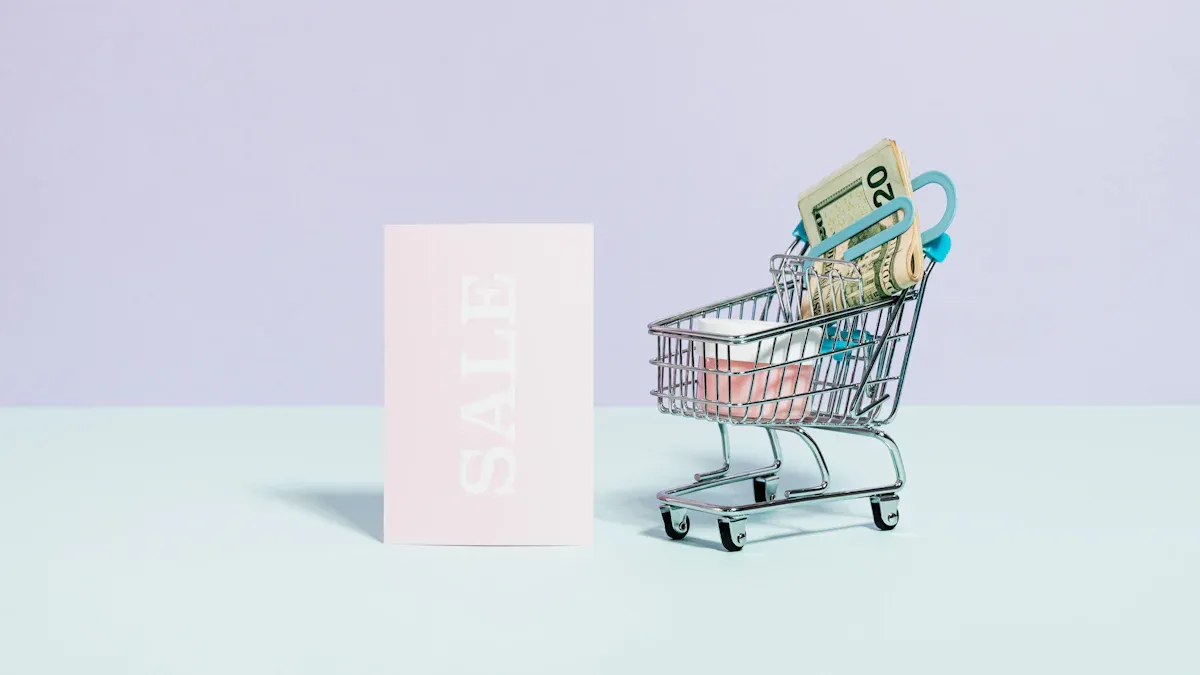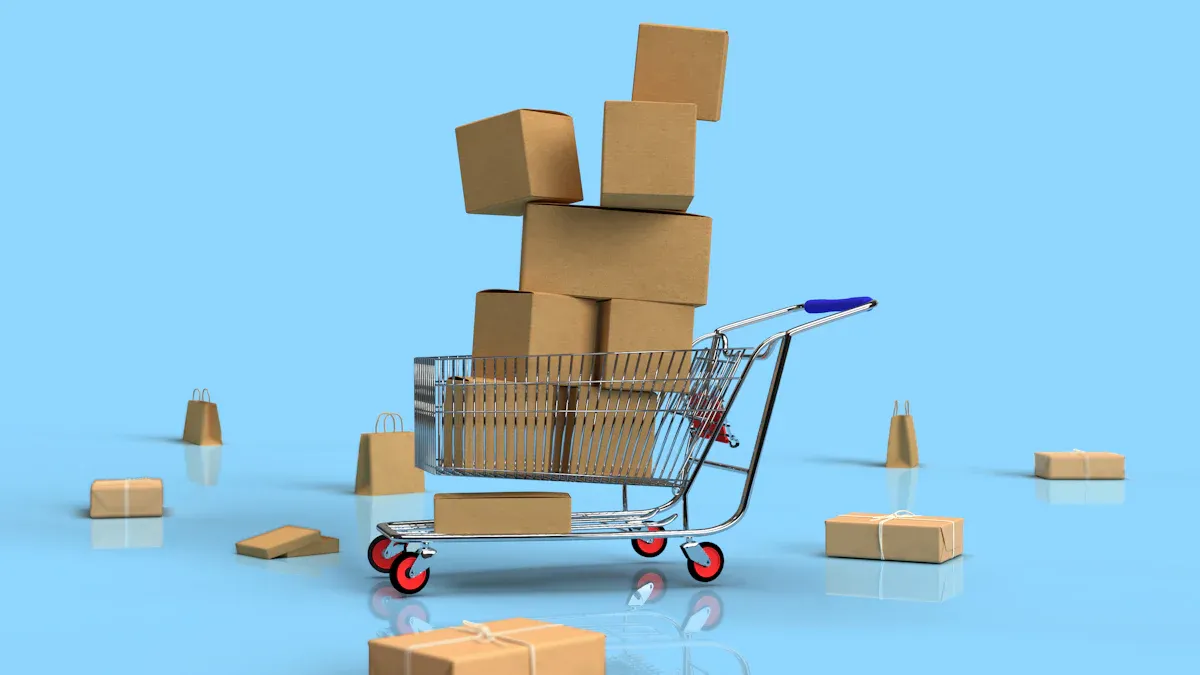The Shopping Cart Sign: Understanding Its Medical Significance and Retail Applications

The shopping cart sign describes how leaning forward on a shopping cart can ease lower back pain for individuals with neurogenic claudication. This posture reduces spinal compression, making it an essential diagnostic clue for spinal stenosis. Beyond medicine, this phenomenon inspires ergonomic retail designs. Cloudpick leverages cutting-edge AI solutions to transform shopping into a frictionless experience for customers worldwide.
Key Takeaways
Bending forward on a shopping cart can ease lower back pain. This position lessens pressure on the spine and gives quick relief.
Noticing the shopping cart sign is important to find spinal stenosis. It helps tell this problem apart from other back pains and leads to better treatment.
Comfortable shopping carts made for support can improve shopping trips. Things like handles you can adjust help with posture, making it easier for people with back pain.
Medical Significance of the Shopping Cart Sign
Connection Between the Shopping Cart Sign and Spinal Stenosis
The shopping cart sign serves as a valuable clue in identifying lumbar spinal stenosis. When you lean forward, as if pushing a shopping cart, the posture reduces pressure on your spinal nerves. This relief is so common among patients that medical professionals use it as a hallmark symptom of spinal stenosis. Dr. Robert Bina, a neurosurgeon, highlights how leaning forward mimics the action of pushing a cart, offering temporary relief from pain. This phenomenon aligns with neurogenic claudication, a condition where pain worsens with lumbar extension but improves with flexion.
Imaging studies and patient evaluations further confirm this connection. Many individuals with spinal stenosis report diminished pain when bending forward or sitting. This pattern of relief strongly associates the shopping cart sign with spinal stenosis, making it a reliable indicator during diagnosis.
Symptoms of Spinal Stenosis and Lower Back Pain
Spinal stenosis often presents with a range of symptoms that affect your daily life. Commonly, you may experience leg pain or discomfort in your buttocks while walking. These symptoms improve when you lean forward, providing temporary relief. Lower back pain is another frequent complaint, especially when bending forward to ease the discomfort.
Motor or sensory disturbances, such as weakness in your lower limbs, may also occur. Neurogenic claudication, the hallmark syndrome of lumbar stenosis, causes trouble walking and differentiates itself from vascular claudication, which stems from atherosclerosis. A table below summarizes the most frequently documented symptoms:
Symptom Description |
|---|
Leg or buttock discomfort while walking |
Back pain while bending forward to relieve symptoms |
Motor or sensory issues while walking |
Normal and symmetric dorsalis pedis pulse |
Weakness of the lower limbs |
Low back pain |
These symptoms highlight the impact of lumbar spinal stenosis on your mobility and quality of life.
Why the Shopping Cart Sign Is a Key Diagnostic Indicator
The shopping cart sign plays a crucial role in diagnosing lumbar spinal stenosis. General practitioners often rely on this sign to identify the condition, rating their confidence in its diagnostic value at 5.6 out of 10. Key criteria include symptom relief when flexing forward or using a shopping cart.
This sign helps differentiate spinal stenosis from other back problems. For example, vascular claudication caused by poor blood flow does not improve with forward flexion. Instead, the shopping cart sign points to nerve compression in the lumbar region, which is a defining feature of spinal stenosis.
Doctors use this indicator to guide back and neck pain assessments, ensuring accurate diagnoses. By recognizing the shopping cart sign, you can better understand your symptoms and seek appropriate treatment for lower extremity symptoms or trouble walking.
How Leaning on a Shopping Cart Relieves Lower Back Pain

The Role of Forward Flexion in Pain Relief
Leaning forward while pushing a shopping cart provides relief from lower back pain by altering the alignment of your spine. This forward flexion increases the space within the spinal canal, reducing pressure on the nerve roots. When you stand upright, the lumbar spine compresses, narrowing the nerve canal. However, bending forward stretches the ligamentum flavum and enlarges the neural foramina, which alleviates pain and discomfort.
Clinical trials confirm that forward flexion significantly reduces leg pain in individuals with lumbar spinal stenosis. This posture is particularly beneficial for those who experience pain while standing or walking. By leaning forward, you can engage in mild activities, such as shopping, without exacerbating your symptoms. This simple action demonstrates how a small change in posture can make a big difference in managing pain.
How Spinal Compression Is Reduced
The mechanics of spinal stenosis explain why leaning on a shopping cart helps reduce spinal compression. This condition involves the narrowing of the nerve canal in the lower back, which leads to symptoms like pain and numbness. When you lean forward, the lumbar spine flexes, opening up the canal and relieving pressure on the nerves.
Engineering research highlights how this action works:
Flexion of the lumbar spine stretches the ligamentum flavum, creating more space for the nerves.
The neural foramina enlarge, reducing compression and alleviating lower extremity symptoms.
Leaning forward, such as when using a shopping cart, relieves pressure on the stenotic spine.
Doctors often use the "shopping cart test" to assess pain relief in patients with spinal stenosis. This test involves observing whether leaning on a cart or walker reduces discomfort. If it does, it strongly suggests that spinal compression is the root cause of the pain.
Common Experiences of Spinal Stenosis Patients
Many individuals with spinal stenosis share similar experiences when it comes to finding relief. Leaning forward on a shopping cart is a common action that helps release pressure on the spinal cord. This position opens up space in the spinal canal, providing immediate comfort.
Patients often describe how this posture allows them to walk longer distances without pain. For example:
Some report that leaning over a shopping cart while shopping significantly reduces their discomfort.
Others find that this position helps them manage symptoms during daily activities, such as walking or standing for extended periods.
These shared experiences highlight the practical benefits of forward flexion for those living with spinal stenosis. By understanding how this simple action works, you can take steps to manage your symptoms and improve your quality of life.
Treatment Options for Spinal Stenosis
Non-Invasive Treatments for Lower Back Pain
Non-invasive treatments offer effective ways to manage spinal stenosis pain without surgery. These approaches focus on improving your mobility and reducing discomfort. Exercise programs, such as tai chi or yoga, strengthen your lumbar muscles and enhance flexibility. Mindfulness-based stress reduction and cognitive behavioral therapy help you cope with pain and improve your quality of life.
A variety of therapies target specific symptoms. Acupuncture and spinal manipulation relieve nerve-related pain, while progressive relaxation and biofeedback reduce tension in your back. Multidisciplinary rehabilitation combines several methods to address claudication and lower extremity symptoms. Clinical outcomes for these treatments include improved function, reduced work disability, and higher patient satisfaction.
Treatment Type | Clinical Outcomes Evaluated |
|---|---|
Non-drug therapy | Reduction or elimination of low back pain, improvement in back-specific and overall function, health-related quality of life, reduction in work disability, patient satisfaction, adverse effects. |
Specific therapies recommended | Exercise, multidisciplinary rehabilitation, acupuncture, mindfulness-based stress reduction, tai chi, yoga, motor control exercise, progressive relaxation, electromyography biofeedback, low level laser therapy, operant therapy, cognitive behavioral therapy, spinal manipulation. |
Minimally Invasive Procedures
Minimally invasive procedures provide targeted relief for lumbar spinal stenosis pain. These techniques focus on reducing nerve compression with minimal disruption to surrounding tissues. The MILD procedure, which stands for minimally invasive lumbar decompression, has shown promising results. It enlarges the spinal canal by removing small amounts of tissue, relieving pressure on the nerves.
Studies comparing MILD to epidural steroid injections (ESI) highlight its effectiveness. The MiDAS ENCORE study demonstrated significant improvements in pain and function for patients undergoing MILD. Other research shows that combining MILD with conservative therapies enhances outcomes. While some studies found no differences in disability scores, pain relief consistently favored MILD.
The MILD procedure reduces spinal stenosis pain more effectively than ESI.
Multi-center trials confirm its efficacy for claudication and lower extremity symptoms.
Combining MILD with traditional therapies strengthens its impact.
Surgical Interventions for Severe Cases
Surgery becomes necessary when spinal stenosis pain severely limits your daily activities. Procedures like laminectomy and spinal fusion aim to decompress the lumbar spine and stabilize the affected area. These interventions provide long-term relief for nerve compression and improve your mobility.
Statistical outcomes validate the effectiveness of surgical treatments. Within the first year, most patients experience significant improvements in symptoms and function. Satisfaction rates remain high, with two-thirds of patients reporting positive results even after ten years.
Time Frame | Pain Improvement | Disability Improvement | Reoperation Rate | |
|---|---|---|---|---|
3 months | 66% | Minor worsening | Minor worsening | N/A |
5 years | 68% | Significant | Significant | 25% |
10 years | 68% | Significant | Significant | N/A |
Surgical interventions offer lasting relief for severe lumbar spinal stenosis cases. By addressing nerve compression directly, they help you regain control over your daily life.
Retail Applications of the Shopping Cart Sign

Ergonomic Design of Shopping Carts for Customer Comfort
Shopping carts play a vital role in ensuring your comfort during shopping trips. Their design considers how you interact with them, especially if you experience back pain. Ergonomic handles and adjustable heights allow you to lean forward naturally, mimicking the posture that relieves discomfort associated with the shopping cart sign. This thoughtful design not only supports your posture but also makes shopping more enjoyable. Retailers prioritize these features to cater to diverse customer needs, ensuring accessibility for everyone.
Cloudpick’s Role in Enhancing Retail Experiences
Cloudpick revolutionizes the way you shop by integrating advanced AI technologies into retail environments. Its automated systems streamline operations for store managers while providing you with a seamless shopping experience. For example, Cloudpick eliminates checkout lines by automating the payment process, allowing you to grab what you need and go. This approach mirrors the efficiency of standardized operations seen in other industries, such as fast food.
A notable example is Auchan’s autonomous store in Lille, where Cloudpick’s technology has replaced traditional checkout counters. This innovation not only improves customer satisfaction but also ensures high accuracy in tracking shopping activity. By removing friction points, Cloudpick transforms shopping into a hassle-free experience.
How AI-Powered Solutions Improve Accessibility and Convenience
AI-powered retail solutions enhance your shopping experience in multiple ways. These technologies optimize inventory management, ensuring that products are always in stock while reducing waste. Frictionless checkout systems automate payments, saving you time and effort. Additionally, AI-driven recommendations personalize your shopping journey by suggesting items based on your purchase history.
Retailers also benefit from AI’s ability to analyze data quickly. This enables them to adjust marketing strategies in real time, improving your overall experience. For instance, targeted marketing campaigns powered by AI have shown a 30% increase in ROI, demonstrating how these technologies create value for both you and the retailer. By leveraging AI, stores become more accessible and convenient, making your shopping trips more efficient and enjoyable.
The Shopping Cart Sign bridges medicine and retail. It helps you understand spinal stenosis symptoms while inspiring ergonomic shopping cart designs. Persistent lower back pain signals the need for medical advice. Cloudpick’s AI-powered solutions redefine shopping, offering frictionless experiences that prioritize your comfort and convenience.
Tip: If you experience back pain relief while leaning forward, consult a healthcare professional for proper evaluation.
FAQ
What is the shopping cart sign?
The shopping cart sign describes how leaning forward, like when pushing a cart, relieves lower back pain caused by spinal stenosis or nerve compression.
How does Cloudpick improve shopping experiences?
Cloudpick uses AI to create frictionless shopping. Its solutions include automated checkouts, personalized recommendations, and efficient inventory management for a seamless experience.
Can ergonomic shopping carts help with back pain?
Yes, ergonomic carts with adjustable handles support forward-leaning posture, reducing discomfort for individuals with spinal stenosis or lower back pain.
See Also
Navigating Walgreens Self-Checkout: Benefits and Drawbacks in Shopping
The Progression of Self-Checkout Systems Over Time
Essential Aspects of Corner Stores and Their Importance
Discovering Sensi Retail: A Cannabis Dispensary Promoting Equity
Uncovering Vending Machine Risks: Analyzing Serious Accidents
